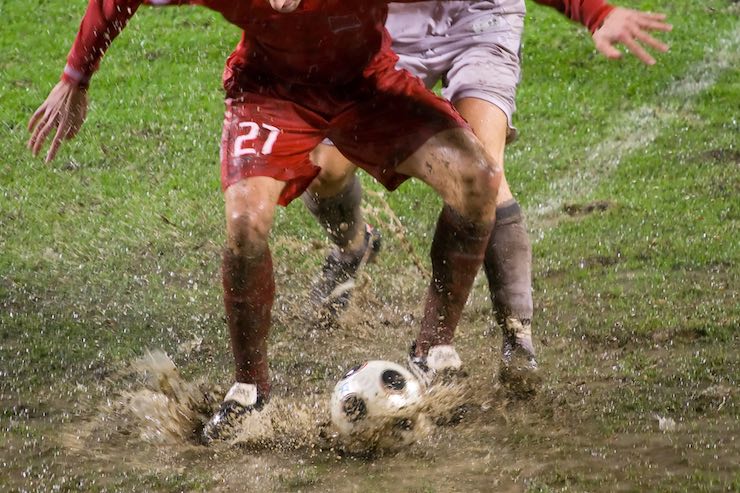Youth Soccer News: Play it Safe When It Comes To Lightning
Lightning is always a concern when storms roll in and kids are on the soccer field. This danger may be on the rise over the coming weeks as thunderstorms become more widespread across the USA.

Here is a news report on lightning in Germany:
Lightning hits children’s soccer match in Germany, 35 hurt
Police reported that 35 people needed medical treatment and were taken to the hospital after lightning struck during a youth soccer game in western Germany. According to the AP NEWS report, spectators police spokesman Dominik Lentz said, “The weather had been clear with no clouds in the sky, … so this incident couldn’t have been expected.”
Three adults, including the soccer referee were also injured. While many of the youth soccer players were taken to the hospital as a precaution, the danger of injury from lightning is very real.
Usually, if you can hear thunder, lightning closely follows and can strike nearby. Knowing what to do — education and prevention — are critical for lightning safety.
 Youth soccer clubs should have a lightning safety plan — and it should be emailed to all parents. Coaches and managers should be informed of the policy and can always designate a person on the team to monitor threatening weather which might impact soccer game schedules.
Youth soccer clubs should have a lightning safety plan — and it should be emailed to all parents. Coaches and managers should be informed of the policy and can always designate a person on the team to monitor threatening weather which might impact soccer game schedules.
Lightning is also addressed in AYSO‘s Severe Weather Play Guidelines, where they mention “An effective plan begins long before any lightning threat is realized.”
US Club Soccer also has a unique guideline in their Severe Weather Protocols – “In a situation where lightning and/or thunder may or may not be present, but you feel your hair stand on end and your skin tingle, immediately assume a crouched position on the ground. Drop to your knees and place your arms and hands on your legs and lower your head. Do not lie flat on the ground. Lightning can travel on the ground for 10-20 feet from where it strikes, so you want to keep contact with the ground to a minimum of body surface area.”
It is important to realize that thunder can even be hard to hear if there is a soccer game going on. And, as in Germany, lightning can strike from a crystal blue sky and without any rain. According to the NCAA, “At least ten percent of lightning occurs when there is no rainfall and when blue sky is visible; this is especially prevalent with summer thunderstorms.”
 In today’s highly technological world filled with cell phones which have weather apps, knowing the forecast is easy. What is not — is stopping, mid-game, because of the threat of lightening. During the excitement of the moment — immersed in the American win-at-all-cost culture — it can be hard to make the decision, let alone enforce it amidst the cries of passionate parents and players. But, doing the right thing is usually not easy, but — especially when it comes to the safety of our children — is definitely the wise choice.
In today’s highly technological world filled with cell phones which have weather apps, knowing the forecast is easy. What is not — is stopping, mid-game, because of the threat of lightening. During the excitement of the moment — immersed in the American win-at-all-cost culture — it can be hard to make the decision, let alone enforce it amidst the cries of passionate parents and players. But, doing the right thing is usually not easy, but — especially when it comes to the safety of our children — is definitely the wise choice.
Sports and lightning safety experts usually recommend waiting 30 minutes after the last sound of thunder or visible lightning before resuming soccer activities.
Lightning can strike up to 10 miles from a storm, so you should seek safe shelter as soon as you hear thunder or see lightning.
We recommend seeing further information. One reference we found is CDC’s Stay Safe During Lightning and Lightning Safety for Organized Outdoor Athletic Events.
Florida, Texas, Colorado, Georgia, New Jersey, North Carolina, Arizona, Missouri, Alabama, and Pennsylvania have the most lightning deaths and injuries.
Weather Reference – National Weather Service (NWS) website at www.weather.gov.






